Related Research Articles

Danny Kaye was an American actor, comedian, singer, and dancer. His performances featured physical comedy, idiosyncratic pantomimes, and rapid-fire novelty songs.
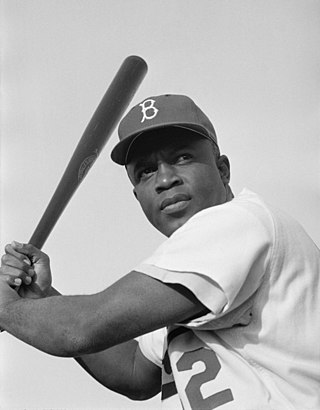
Jack Roosevelt Robinson was an American professional baseball player who became the first African-American to play in Major League Baseball (MLB) in the modern era. Robinson broke the color line when he started at first base for the Brooklyn Dodgers on April 15, 1947. The Dodgers signing Robinson heralded the end of racial segregation in professional baseball, which had relegated black players to the Negro leagues since the 1880s.

Adolph Zukor was a Hungarian-American film producer best known as one of the three founders of Paramount Pictures. He produced one of America's first feature-length films, The Prisoner of Zenda, in 1913.

Leo Ernest Durocher, nicknamed "Leo the Lip" and "Lippy", was an American professional baseball player, manager and coach. He played in Major League Baseball as an infielder. Upon his retirement, he ranked fifth all-time among managers with 2,008 career victories, second only to John McGraw in National League history. Durocher still ranks twelfth in career wins by a manager. A controversial and outspoken character, Durocher's half-century in baseball was dogged by clashes with authority, the baseball commissioner, the press, and umpires; his 100 career ejections as a manager trailed only McGraw when he retired, and he still ranks third on the all-time list. He won three National League pennants and one world championship.

The Kings Theatre is a theater and live performance venue at 1027 Flatbush Avenue in the Flatbush neighborhood of Brooklyn in New York City, New York. Designed by Rapp and Rapp as a movie palace, it opened on September 7, 1929, as one of five Loew's Wonder Theatres in the New York City area. The theater's interior decor was supervised by Rapp and Rapp along with Harold Rambusch. Owned by the New York City Economic Development Corporation, the Kings Theatre has been operated by the Ambassador Theatre Group since 2015. It is listed on the National Register of Historic Places.

Marcus Loew was an American business magnate and a pioneer of the motion picture industry who formed Loew's Theatres and the Metro-Goldwyn-Mayer film studio (MGM).
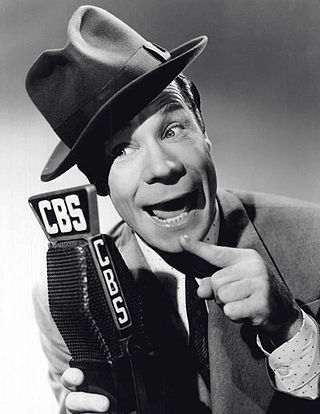
Joseph Evans Brown was an American actor and comedian, remembered for his friendly screen persona, comic timing, and enormous, elastic-mouth smile. He was one of the most popular American comedians in the 1930s and 1940s, and enjoyed lengthy careers in both motion pictures and radio. Later he became a character actor and comedian, as in Some Like It Hot (1959), in which he utters the film's famous punchline "Well, nobody's perfect."

The Broadway Theatre is a Broadway theater at 1681 Broadway in the Theater District of Midtown Manhattan in New York City. Opened in 1924, the theater was designed by Eugene De Rosa for Benjamin S. Moss, who originally operated the venue as a movie theater. It has approximately 1,763 seats across two levels and is operated by The Shubert Organization. The Broadway Theatre is one of the few Broadway theaters that is physically on Broadway.
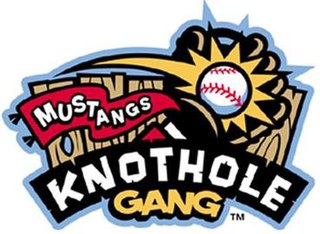
In minor league baseball promotion, the Knothole Gang is a special ticket package for children sold in an effort to bring more families out to games.
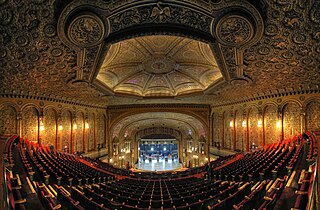
The United Palace is a theater at 4140 Broadway in the Washington Heights neighborhood of Manhattan in New York City. The theater, occupying a city block between Broadway, Wadsworth Avenue, and West 175th and 176th Streets, is both a house of worship and a cultural center. The architect, Thomas W. Lamb, designed the theater as a movie palace, which opened on February 22, 1930, as one of five Loew's Wonder Theatres in the New York City area. The theater's interior decor, incorporating elements of numerous architectural styles, was supervised by Lamb and Harold Rambusch.
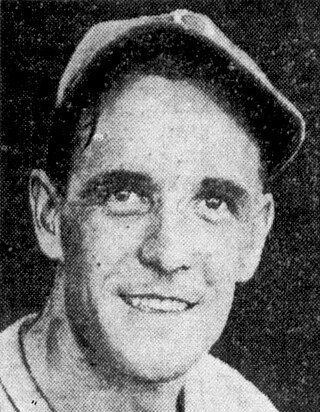
George Tucker Stainback was an American professional baseball outfielder. He played in Major League Baseball (MLB) for 13 seasons with the Chicago Cubs (1934–1937), St. Louis Cardinals (1938), Philadelphia Phillies (1938), Brooklyn Dodgers (1938–1939), Detroit Tigers (1940–1941), New York Yankees (1942–1945), and Philadelphia Athletics (1946).

Nils T. Granlund was an American show producer, entertainment industry entrepreneur and radio industry pioneer. He was a publicist for Marcus Loew who formed Loews Theatres and Metro-Goldwyn-Mayer (MGM). He developed the first film trailers. Although his birth name was Nils Theodore Granlund, he later used Thor as a middle name, and after appearing on early radio was commonly referenced only by his initials, N.T.G., on the air and in print.
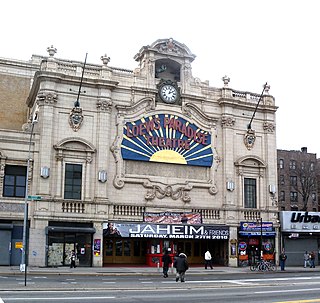
The Paradise Theater is a theater at 2403 Grand Concourse in the Fordham neighborhood of the Bronx in New York City, New York. Designed by John Eberson as a movie palace, it opened on September 7, 1929, as one of five Loew's Wonder Theatres in the New York City area. Although the building is no longer in use as a movie theater, its facade and interior are preserved as New York City designated landmarks.

The Brooklyn Dodgers were a Major League Baseball team founded in 1883 as the Brooklyn Grays. In 1884, it became a member of the American Association as the Brooklyn Atlantics before joining the National League in 1890. They remained in Brooklyn, New York, until 1957, after which the club moved to Los Angeles, California, where it continues its history as the Los Angeles Dodgers. The team moved west at the same time as its longtime rival, the New York Giants, moved to San Francisco in northern California as the San Francisco Giants.
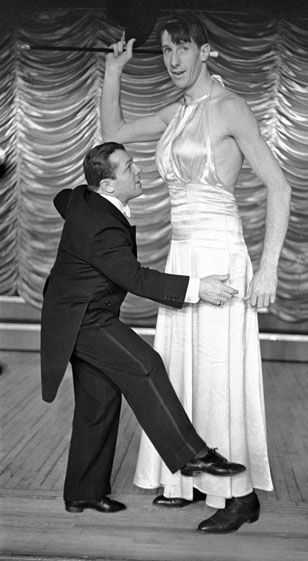
Barto and Mann: Dewey Barto and George Mann, known as the "laugh kings" of vaudeville, were a comedic dance act from the late 1920s to the early 1940s. Their acrobatic, somewhat risqué, performance played on their disparities in height; Barto was 4'11" and Mann was 6'6".

The Loew's State Theatre was a movie theater at 1540 Broadway on Times Square in New York City. Designed by Thomas Lamb in the Adam style, it opened on August 29, 1921, as part of a 16-story office building for the Loew's Theatres company, with a seating capacity of 3,200 and featuring both vaudeville and films. It was the first theater on Broadway to cost $1 million. It was initially managed by Joseph Vogel, who later became president of Loew's Inc. and then MGM.

Herman Timberg was a vaudevillian, actor and songwriter, a writer of sketches and dialogue for vaudeville and musicals, "active in nearly every field of show business". He was the brother of composer Sammy Timberg and uncle of the journalist Robert Timberg.
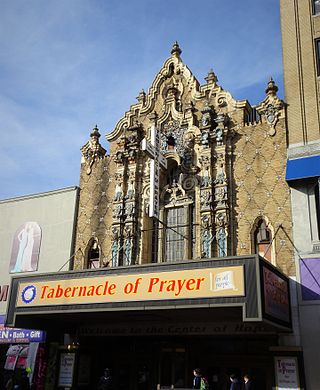
The Valencia Theatre is a church building at 165-11 Jamaica Avenue in the Jamaica neighborhood of Queens in New York City, New York. Designed by John Eberson as a movie palace, it opened on January 11, 1929, as one of five Loew's Wonder Theatres in the New York City area. The theater has been occupied by the Tabernacle of Prayer for All People since 1977. It is a New York City designated landmark.

Hilda Chester, also known as Howlin' Hilda, was an American fan of the Brooklyn Dodgers baseball team, and arguably the most famous fan in baseball history.

The Shore Theater is a former movie theater in the Coney Island neighborhood of Brooklyn in New York City. The seven-story neo-Renaissance Revival building, with office space as well as a theater, is located at the intersection of Surf and Stillwell Avenues, across from Nathan's Famous and the Coney Island–Stillwell Avenue station. Completed in 1925, it was one of several structures that was intended to boost the development of Coney Island as a year-round entertainment destination. After being abandoned in the 1970s, it stood unused for several years before being redeveloped into a hotel in the late 2010s. As of 2024, the building is still undergoing reconstruction.
References
- 1 2 3 4 5 6 7 8 9 10 11 12 13 14 "Happy Felton of 'Knothole Gang,' Baseball TV Show, Dead at 56" . The New York Times. October 22, 1964. p. 35. Retrieved April 16, 2022.
- ↑ "Happy Felton". Internet Broadway Database. The Broadway League. Archived from the original on November 17, 2021. Retrieved April 19, 2022.
- 1 2 "He got around" . The New York Times. September 16, 1945. p. X 5. Retrieved April 18, 2022.
- ↑ Martin, Darrell V. (September 11, 1933). "Happy Felton Bellevue Boy". Pittsburgh Post-Gazette. p. 12. Retrieved April 19, 2022– via Newspapers.com.
- 1 2 3 4 5 6 "Can Happy Felton, Of 'Pot 'O Gold' Have Your Number?". The Jackson Sun. November 3, 1946. p. 28. Retrieved April 17, 2022– via Newspapers.com.
- ↑ "Happy Felton Held Over at State" . The New York Times. August 13, 1943. p. 13. Retrieved April 16, 2022.
- ↑ Webb, Graham (2020). Encyclopedia of American Short Films, 1926-1959. McFarland. p. 373. ISBN 978-1-4766-8118-4 . Retrieved April 19, 2022.
- ↑ Dunning, John (1998). On the Air: The Encyclopedia of Old-Time Radio (Revised ed.). New York, NY: Oxford University Press. p. 639. ISBN 978-0-19-507678-3.
- ↑ "Music -- As Written". Billboard. July 5, 1947. p. 36. Retrieved April 18, 2022.
- ↑ Hinckley, David (October 10, 2003). "Youthful Interest in Baseball: Happy Felton and His Knothole Gang". Daily News. New York, New York City. p. 41. Retrieved April 19, 2022– via Newspapers.com.
- 1 2 3 4 "Television Juvenile Baseball Testing Ground" . The New York Times. April 26, 1953. p. X 10. Retrieved April 16, 2022.
- 1 2 3 Shanley, J. P. (June 4, 1955). "Television: 'Knot-Hole Gang'" . The New York Times. p. 33. Retrieved April 16, 2022.
- ↑ "Studebaker takes Felton show . . " (PDF). Billboard. April 11, 1953. p. 6. Retrieved April 20, 2022.
- ↑ "Loew's Theaters, M-G-M, Happy Felton TV in Deal". The Brooklyn Daily Eagle. March 4, 1952. p. 6. Retrieved April 19, 2022– via Newspapers.com.
- ↑ Corby, Jane (April 20, 1952). "Loew's Theaters -- Baseball -- TV Tieup Makes a Hit With the Kids". The Brooklyn Daily Eagle. p. 29. Retrieved April 19, 2022– via Newspapers.com.
- ↑ "School Days". Billboard. May 22, 1948. p. 15. Retrieved April 18, 2022.
- ↑ Brooks, Tim; Marsh, Earle (1999). The Complete Directory to Prime Time Network and Cable TV Shows 1946-Present (7th ed.). New York: The Ballentine Publishing Group. pp. 893–894. ISBN 0-345-42923-0.
- 1 2 McNeil, Alex (1996). Total Television: the Comprehensive Guide to Programming from 1948 to the Present (4th ed.). New York, New York: Penguin Books USA, Inc. p. 359. ISBN 0-14-02-4916-8.
- ↑ "It's a Hit (Net)" (PDF). Billboard. July 15, 1957. p. 20. Retrieved April 19, 2022.
- ↑ "Happy Felton marries" . The New York Times. June 4, 1942. p. 27. Retrieved April 16, 2022.